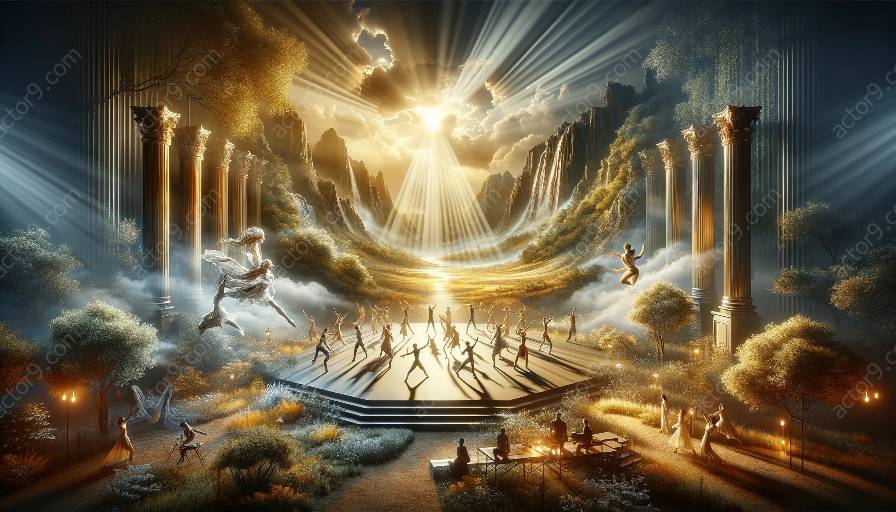Physical theatre is a captivating art form that relies heavily on non-verbal communication, movement, and visual storytelling. In physical theatre, lighting serves as a powerful tool to convey abstract concepts and ideas, shaping the mood, atmosphere, and emotional impact of the performance. Through the use of lighting effects and techniques, physical theatre creators can create immersive experiences that engage the audience on a deeper level.
The Essence of Physical Theatre
Physical theatre is a genre that emphasizes the use of physical movement, gesture, and expression as the primary means of storytelling. It often combines elements of dance, mime, acrobatics, and other movement-based disciplines to convey narratives, emotions, and ideas. A distinctive characteristic of physical theatre is its ability to explore complex themes and concepts without relying on spoken language. This places significant importance on the visual and sensory elements of the performance, including lighting.
Shaping Mood and Atmosphere
Lighting plays a fundamental role in shaping the mood and atmosphere of a physical theatre production. By manipulating light intensity, color, and direction, lighting designers can create a dynamic range of emotional tones. For instance, warm and soft lighting may evoke feelings of intimacy, tranquility, or nostalgia, while cold and harsh lighting can instill sensations of tension, unease, or mystery. These variations in lighting contribute to the evocative and immersive nature of physical theatre, allowing performers to convey abstract concepts through visual and sensory experiences.
Enhancing Visual Narrative
Lighting is a crucial element in enhancing the visual narrative of a physical theatre performance. It can draw attention to specific movements, gestures, or objects on stage, guiding the audience's focus and reinforcing the storytelling. Through the use of spotlighting, silhouetting, or shadow play, lighting can transform the stage into a canvas of visual symbolism, representing abstract ideas and themes in a visually compelling manner. By orchestrating light and shadow, physical theatre practitioners can create striking tableaus and sequences that communicate profound concepts without the need for explicit dialogue.
Symbolism and Metaphor
Lighting in physical theatre often operates as a tool for symbolism and metaphor. The interplay of light and darkness can mirror the emotional journeys of characters, the conflicts within narratives, or even the human experience itself. Light and shadow become symbolic of contrasting forces, such as hope and despair, illusion and reality, or order and chaos. Through the deliberate manipulation of lighting, physical theatre artists can infuse their performances with layers of meaning, inviting the audience to interpret and connect with the abstract ideas being portrayed.
Immersion and Transformation
When used innovatively, lighting has the power to immerse the audience in the world of physical theatre and facilitate transformative experiences. Dynamic lighting effects, such as strobing, dappled patterns, or kaleidoscopic projections, can transport viewers into surreal, dreamlike realms where abstract concepts come to life. By engaging the audience's senses and imagination, the interplay of light and movement in physical theatre cultivates an environment where spectators are invited to perceive and contemplate the intangible themes and ideas woven into the performance.
Conclusion
Lighting is an indispensable element in physical theatre, enabling creators to transcend verbal language and embody abstract concepts and ideas through visual, emotional, and sensory means. By harnessing lighting effects and techniques, physical theatre productions can stimulate profound connections with audiences, inviting them to participate in the exploration of complex themes and experiences. Ultimately, the role of lighting in physical theatre extends far beyond illumination—it is an essential component in the art of evoking emotions, stimulating imagination, and representing the ineffable through the tangible.




































